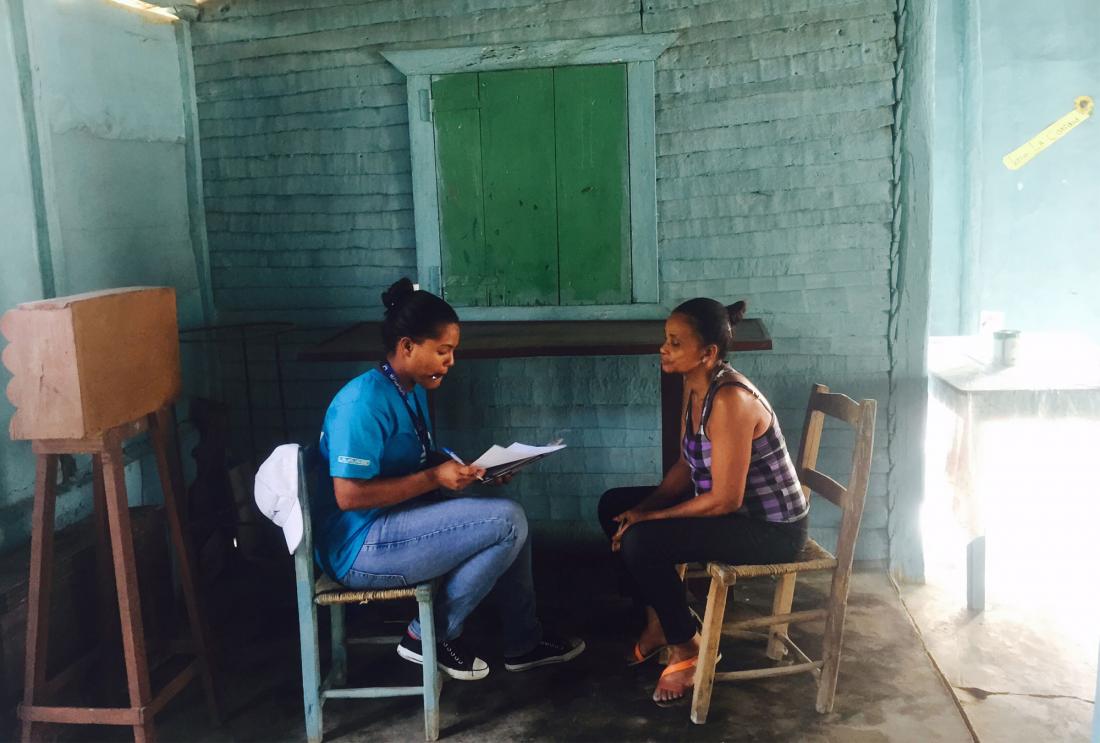Conditional Cash Transfers and Commitment Savings Accounts in the Dominican Republic
- Household finance
- Cash transfers
- Commitment devices
- Financial literacy
- Incentives
- Savings
Evidence suggests that facilitating access to formal savings services can increase savings, investment, and income among the poor in developing countries. However, use of these accounts is relatively low, and it is less clear how to increase interest in, and usage of, formal savings services among the poor. In the Dominican Republic, researchers partnered with a Dominican bank to evaluate the impact of commitment savings accounts among beneficiaries of ProSoli, a conditional cash transfer program.
الموضوع الأساسي
Research suggests that, even among poor people, facilitating access to formal savings services can increase savings, investment, and income.1 In particular, research has shown that commitment savings accounts, whichfeature either incentives for saving or penalties for withdrawing, are effective in helping the poor save.2 However, use of these accounts remains low, and it is unclear how to increase interest in, and use of, savings accounts among the poor. It is possible that conditional cash transfer (CCT) programs—in which households receive cash if they meet certain requirements, such as sending their children to school or regularly visiting health facilities—offer a mechanism to encourage the poor to save. This research evaluates: (1) who benefits most from access to formal savings products among the target population of CCT recipients, as measured by a range of individual and household characteristics; (2) whether increases in savings affect household consumption, housing improvements, and education; and (3) what are the characteristics that make individuals respond to pro-saving messages, take up commitment savings accounts, and fulfill their savings goals.
سياق التقييم
The study takes place in the Azua province of the Dominican Republic among beneficiaries of a government-run conditional cash transfer program, Progresando con Solidaridad (PROSOLI). This study focuses on PROSOLI households at or below the poverty line, but not the extreme poor (as classified by the country’s national poverty index), since they are considered more capable of saving than those living in extreme poverty.
An internal government study in 2011 found low levels of formal financial services among PROSOLI households.3 The Social Cabinet of the Dominican Republic, which implements the CCT program, is interested in adding financial inclusion initiatives—particularly commitment savings programs—to improve the economic situation and overall wellbeing of beneficiaries.

معلومات تفصيلية عن التدخل
Researchers are conducting a randomized evaluation among 4,160 randomly selected PROSOLI households to understand how savings mechanisms affect their financial behavior and who is impacted most by having access to these savings mechanisms.
The heads of selected beneficiary households will first receive invitations to a savings training session, offered by the partner bank Asociación Dominicana para el Desarrollo de la Mujer (ADOPEM). The 3-4-hour session will cover the importance of saving, the advantages of formal savings over informal savings, and tips to manage household finances. A representative from ADOPEM will then offer participants one of two savings accounts, assigned at random to each session:
-
Soft commitment and incentives account: This account is labeled with the client’s chosen savings goals—primarily education expenses or housing improvements, although any savings goal is possible. Account holders decide how much they will deposit monthly. Those who adhere to their deposit schedule will be entered into a lottery for a cash prize equal to twice the saved amount. These accountholders will also be automatically approved for emergency loans of up to 50 percent of their account balance.
-
Regular savings account: This is a normal savings account, which is neither labeled for a savings goal nor incentivized.
One year after the initial product offer and trainings occur, researchers will examine take-up, account usage, savings balances, and whether savings committed to a specific label were ultimately used for those purposes.
The study primarily focuses on the characteristics of beneficiaries that correlate with greater take-up and usage of those accounts. To measure this, researchers are gathering information on the socioeconomic status of beneficiary households, employment and income, and previous knowledge or use of formal financial services. They are also measuring risk aversion, discount rates, entrepreneurial attitudes, grit, and other psychological metrics, as well as collecting audio recordings of surveyed beneficiaries responding to open-ended questions about their perception and attitudes towards savings. All these data will be incorporated into a larger prediction model, to see if they can be used to anticipate take up and usage of the savings accounts offered by ADOPEM.
النتائج والدروس المستفادة بشأن السياسات
Project ongoing; results forthcoming.

